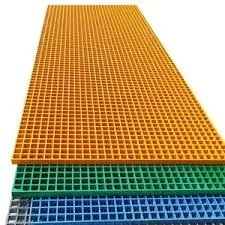
-
 Afrikaans
Afrikaans -
 Albanian
Albanian -
 Amharic
Amharic -
 Arabic
Arabic -
 Armenian
Armenian -
 Azerbaijani
Azerbaijani -
 Basque
Basque -
 Belarusian
Belarusian -
 Bengali
Bengali -
 Bosnian
Bosnian -
 Bulgarian
Bulgarian -
 Catalan
Catalan -
 Cebuano
Cebuano -
 China
China -
 China (Taiwan)
China (Taiwan) -
 Corsican
Corsican -
 Croatian
Croatian -
 Czech
Czech -
 Danish
Danish -
 Dutch
Dutch -
 English
English -
 Esperanto
Esperanto -
 Estonian
Estonian -
 Finnish
Finnish -
 French
French -
 Frisian
Frisian -
 Galician
Galician -
 Georgian
Georgian -
 German
German -
 Greek
Greek -
 Gujarati
Gujarati -
 Haitian Creole
Haitian Creole -
 hausa
hausa -
 hawaiian
hawaiian -
 Hebrew
Hebrew -
 Hindi
Hindi -
 Miao
Miao -
 Hungarian
Hungarian -
 Icelandic
Icelandic -
 igbo
igbo -
 Indonesian
Indonesian -
 irish
irish -
 Italian
Italian -
 Japanese
Japanese -
 Javanese
Javanese -
 Kannada
Kannada -
 kazakh
kazakh -
 Khmer
Khmer -
 Rwandese
Rwandese -
 Korean
Korean -
 Kurdish
Kurdish -
 Kyrgyz
Kyrgyz -
 Lao
Lao -
 Latin
Latin -
 Latvian
Latvian -
 Lithuanian
Lithuanian -
 Luxembourgish
Luxembourgish -
 Macedonian
Macedonian -
 Malgashi
Malgashi -
 Malay
Malay -
 Malayalam
Malayalam -
 Maltese
Maltese -
 Maori
Maori -
 Marathi
Marathi -
 Mongolian
Mongolian -
 Myanmar
Myanmar -
 Nepali
Nepali -
 Norwegian
Norwegian -
 Norwegian
Norwegian -
 Occitan
Occitan -
 Pashto
Pashto -
 Persian
Persian -
 Polish
Polish -
 Portuguese
Portuguese -
 Punjabi
Punjabi -
 Romanian
Romanian -
 Russian
Russian -
 Samoan
Samoan -
 Scottish Gaelic
Scottish Gaelic -
 Serbian
Serbian -
 Sesotho
Sesotho -
 Shona
Shona -
 Sindhi
Sindhi -
 Sinhala
Sinhala -
 Slovak
Slovak -
 Slovenian
Slovenian -
 Somali
Somali -
 Spanish
Spanish -
 Sundanese
Sundanese -
 Swahili
Swahili -
 Swedish
Swedish -
 Tagalog
Tagalog -
 Tajik
Tajik -
 Tamil
Tamil -
 Tatar
Tatar -
 Telugu
Telugu -
 Thai
Thai -
 Turkish
Turkish -
 Turkmen
Turkmen -
 Ukrainian
Ukrainian -
 Urdu
Urdu -
 Uighur
Uighur -
 Uzbek
Uzbek -
 Vietnamese
Vietnamese -
 Welsh
Welsh -
 Bantu
Bantu -
 Yiddish
Yiddish -
 Yoruba
Yoruba -
 Zulu
Zulu
grp dual lamination product
Exploring GRP Dual Lamination Products A Comprehensive Overview
In today's fast-paced industrial landscape, the need for innovative and durable materials has become paramount. Among the various options available, Glass Reinforced Plastic (GRP) dual lamination products have emerged as a popular choice due to their exceptional properties and versatility. This article explores the key features, advantages, and applications of GRP dual lamination products, highlighting their importance in various industries.
What is GRP Dual Lamination?
GRP dual lamination refers to a manufacturing process that involves layering glass fiber reinforced plastic with another material, typically a thermoplastic or another composite. This dual-layer approach enhances the mechanical properties of the base material while providing improved resistance to environmental factors such as corrosion, impact, and UV radiation. The result is a robust, lightweight product that offers enhanced performance over traditional materials.
Key Features
1. Durability One of the standout characteristics of GRP dual lamination products is their exceptional durability. The combination of glass fibers and plastic results in a material that can withstand harsh conditions, making it ideal for outdoor applications and settings exposed to chemical agents.
2. Lightweight Compared to metals and other heavy materials, GRP is significantly lighter, which can lead to reduced transportation costs and easier installation. This lightweight nature also contributes to greater energy efficiency in applications such as transportation and construction.
3. Customization GRP dual lamination products can be tailored to meet specific requirements. Manufacturers can adjust parameters such as thickness, fiber orientation, and materials used to cater to the desired mechanical and aesthetic properties.
4. Corrosion Resistance One of the critical advantages of GRP products is their intrinsic resistance to corrosion. This feature is particularly valuable in industries such as chemical processing and oil & gas, where materials are often exposed to aggressive substances.
5. Thermal and Electrical Insulation GRP dual lamination products provide excellent thermal and electrical insulation, making them suitable for applications in electronics and power distribution systems.
grp dual lamination product

Applications
The versatility of GRP dual lamination products enables their use across a wide range of industries
- Construction GRP laminates are utilized in building facades, roofing systems, and structural components due to their lightweight and durable nature.
- Aerospace The aerospace sector benefits from the high strength-to-weight ratio of GRP, making it an ideal choice for various structural elements in aircraft.
- Transport The automotive and rail industries utilize GRP dual lamination for components such as body panels, hoods, and interior parts, enhancing both performance and fuel efficiency.
- Chemical and Oil & Gas Industries The resistance to corrosive substances makes GRP products a preferred choice for storage tanks, pipelines, and fittings.
- Marine Applications Boats and other marine structures benefit from the lightweight and corrosion-resistant properties of GRP, ensuring longevity while minimizing maintenance needs.
Conclusion
GRP dual lamination products represent a significant advancement in materials technology, combining the best attributes of glass fiber and plastic composites. Their durability, lightweight nature, customization potential, and resistance to environmental factors make them an invaluable choice for various applications across multiple industries. As technological advancements continue to evolve, the scope and potential of GRP dual lamination products will undoubtedly expand, solidifying their presence as a preferred material in the modern industrial arena.









